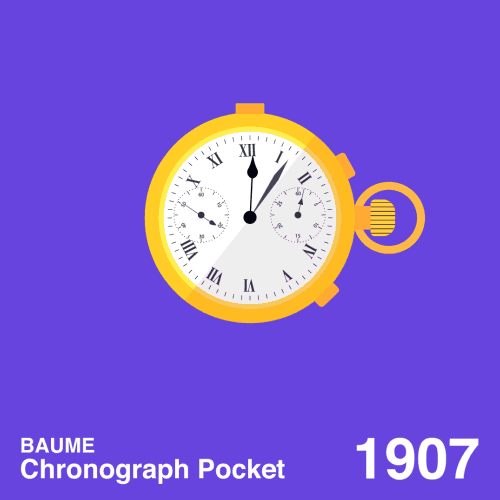History of Rolex
Luxferity, 27.06.2018
HISTORY OF ROLEX
The status of Rolex and the unique identity of the brand are products of a history driven by a passion for innovation and a constant quest for excellence. A fascinating succession of pioneering achievements encompassing a watchmaking, industrial and human adventure, this story is interwoven with the history of the Oyster, the first waterproof wristwatch. Since its launch in 1926, the Oyster has become the pillar of a collection of legendary watches, among the most recognized and most recognizable in the world.
HANS WILSDORF AND HIS VISIONARY GENIUS
The success of Rolex is inextricably linked to the extraordinary spirit of enterprise of its founder, Hans Wilsdorf (1881-1960). Through his visionary genius and uncommon capacity to embrace all fields of the company’s activities – technology, communication, organization and distribution – as head of Rolex for more than 50 years, he set the fundamental course for an adventure which has given birth to exceptional watches and an unparalleled brand. Today, his personality and his work continue to inspire the company and permeate its corporate culture. Hans Wilsdorf’s influence is also evident in the aesthetics and intrinsic characteristics of a product that has remained faithful to the original, as well as in Rolex’s ability to draw on its prodigious heritage to continuously advance towards new horizons.
The Rolex adventure began in the early 1900s. Born in Bavaria, Germany, Hans Wilsdorf began his career in watchmaking in La Chaux-de-Fonds, Switzerland. In an era when pocket watches were the order of the day, he was quick to see the potential of the wristwatch for the 20th century, despite their not yet being very precise and being generally considered to be items of jewellery of particular appeal to women.
Hans Wilsdorf foresaw that the wristwatch by its very nature was destined to become an everyday necessity – for men as well as for women – provided that it could be a precise, waterproof, robust and reliable instrument. His stroke of genius was to anticipate what is now taken for granted, and to contribute to making the wristwatch what it is today.
CHRONOMETRIC PRECISION AND WATERPROOFNESS
In 1905, when living in London – then the economic and financial capital of the world – Hans Wilsdorf founded with his partner the firm Wilsdorf & Davis specializing in the distribution of wristwatches in Great Britain and the British Empire. The watch components were produced for him by Swiss partners selected for their expertise. Among them was the Maison Aegler in Bienne, which would eventually become the Manufacture des Montres Rolex SA. He regarded it as the only manufacturer at the time able to produce the small, precise movements he needed for his wristwatches. Observing the remarkable rise in leisure time and the practice of sports, Hans Wilsdorf wanted to prove to a still sceptical public that wristwatches and chronometric precision were compatible.
His quest was soon crowned with resounding success. In 1910, a Rolex wristwatch obtained the first certificate in the world granted to such a watch by the Official Watch Rating Centre in Bienne, Switzerland. Four years later, in 1914, a similar model received from the prestigious Kew Observatory in England the first “Class A” certificate accorded to a wristwatch, a distinction until then reserved for marine chronometers. This was proof that wristwatches and chronometric precision could go hand in hand. The next challenge was waterproofness. The precision of the wristwatch would be seriously compromised if its case did not keep out water and dust. Hans Wilsdorf would once again draw on his spirit of enterprise and his energy to make the wristwatch waterproof.
THE INVENTION OF THE NAME “ROLEX”
Foreseeing the importance of the brand concept, in 1908 Hans Wilsdorf coined the name “Rolex” to sign his creations. The criteria behind his choice still sound incredibly modern today. He sought a name that would be:
- short, five letters maximum;
- easy to pronounce in any language;
- pleasant sounding;
- easy to remember;
- possible to inscribe elegantly on the dial and movement of a watch.
A SPIRIT OF ENTERPRISE WITHOUT BORDERS
Hans Wilsdorf left England in 1919 to settle in Geneva, Switzerland, where he founded Montres Rolex SA in 1920. This brought him closer to his supplier in Bienne and allowed him to optimize their collaboration. The international reputation of Geneva, which itself boasted a venerable watchmaking tradition, also played an important role in his decision.
OYSTER: THE FIRST WATERPROOF WRISTWATCH
In 1926, Hans Wilsdorf’s efforts to achieve waterproofness proved successful with the invention of the Rolex Oyster, the first waterproof wristwatch in the world, thanks to a case equipped with an ingenious patented system consisting of a screw-down bezel, case back and winding crown. Hermetically sealed, it offered optimal protection for the movement.
The fluting of the bezel, like that of the case back, served a functional purpose. It was used to screw the bezel and case back onto the middle case with a specific tool invented by Rolex. It also gave the watch its visual identity and unique personality. Today, although the Oyster’s bezel is no longer screwed down onto the case, the bezels on several models still feature the characteristic fluting, echoing the original 1926 model.
Thanks to the Oyster and its totally innovative waterproof case, Rolex stepped firmly into watchmaking history. In addition to the know-how Hans Wilsdorf so aptly demonstrated, his keen sense of communication gave Rolex an admirable head start.

BIRTH OF THE TESTIMONEE CONCEPT
In 1927, Wilsdorf showed his creative genius for communication in spectacular fashion. He decided to test the Oyster by subjecting it to an ordeal that would prove its merits, and make Rolex know-how widely known. That year, equipped with an Oyster, a young Englishwoman named Mercedes Gleitze swam the English Channel. After more than 10 hours, the watch emerged from the water in perfect working order. To celebrate the feat, Hans Wilsdorf published a full-page advertisement on the front page of the Daily Mail proclaiming the success of the waterproof watch and announcing “the triumphant march of the Rolex Oyster around the world”.
This event marked the birth of the Testimonee concept and the beginning of a long and fruitful association between Rolex and exceptional personalities, whose accomplishments bear witness to the excellence of Rolex watches. These privileged ties would develop in fields as varied as exploration, sports and culture. They are based on a strong relationship of trust between the brand and its Testimonees.
THE PERPETUAL ROTOR
After chronometric precision and waterproofness, Hans Wilsdorf sought to complete the third part of the Oyster triptych, the self-winding mechanism. As long as a wristwatch had to be wound by hand daily, its crown had to be unscrewed, compromising its waterproofness and therefore its precision. In 1931, Rolex invented the first wristwatch self-winding system with a free rotor, named the Perpetual rotor, the precursor of contemporary self-winding systems.
This innovation consists of a weight oscillating freely in both directions on a central axle. Thanks to wrist movements alone, the watch is constantly being wound. The Perpetual rotor made manual winding a thing of the past, freeing the wearer from a major constraint.
THE ROLEX CROWN AND ROLESOR
Two other fundamental elements of the Rolex identity emerged in the 1930s. The Rolex crown, the logo and symbol par excellence of the brand, was registered in 1931. It appeared for the first time on Rolex dials during the 1930s, then on the winding crown in the early 1950s. In this same period, it began to replace the 12 o’clock hour marker on the dials.
In 1933 the name Rolesor was registered to designate the combination of two different materials, gold and steel, on a Rolex watch. This was first used by Rolex in the 1920s, has since become a distinctive aesthetic code of the brand.
WATCHES OF GREAT PRESTIGE
In the 1940s and 1950s, Rolex launched watches of great prestige that would be worn by influential people and would very rapidly become timeless classics of the Oyster collection.
The year 1945 saw the birth of the Oyster Perpetual Datejust, the first self-winding wrist chronometer to indicate the date in a window on the dial. A watch of great distinction, equipped with a fluted bezel and a Jubilee bracelet created specially for it, the Datejust was immediately recognizable. It is the pillar of the Oyster collection. Initially for men, various models became available for women in the course of the following decade.
In 1956 the Oyster Perpetual Day-Date made its debut. It was the first wristwatch to display the day of the week spelt out in full in a window on the dial in addition to the date. Available only in platinum or 18 ct gold, it has featured since its birth a crystal with a Cyclops lens that enlarges the date for easy reading. This innovation, another Rolex mark of distinction, was later extended to all models in the Oyster collection displaying the date. With the President bracelet, originally created specially for it, the Day-Date continues to be the watch par excellence of influential people.
THE WORLD AS A PROVING GROUND
As of 1926 and the invention of the Oyster, the world became a proving ground for Rolex to validate the intrinsic qualities of its watches under real-life conditions. Wherever extreme conditions prevail, on the seas or in the depths of the oceans, on the highest mountain tops or in polar regions, Rolex has continuously tested the precision, waterproofness, robustness and reliability of its timepieces.
Speed is another validation challenge for the brand. In 1935, at the wheel of his specially built record-breaking car Bluebird, an Oyster on his wrist, Sir Malcolm Campbell became the first man to reach the mythical speed of 300 mph (approximately 480 km/h). In 1947, the first pilot to break the sound barrier, at the controls of a rocket-powered aircraft, was also wearing a Rolex Oyster. In both cases, the watch was subjected to extremely fast acceleration and strong vibrations without suffering any negative effects.
From the 1930s, the Oyster was worn on numerous Himalayan expeditions, one of which has entered into the annals of history. In 1953, Sir Edmund Hillary and Tenzing Norgay, members of a British expedition led by Sir John Hunt, were the first to reach the summit of Everest. They joined the list of extraordinary men and women who, by their perseverance and will to achieve, demonstrate qualities that are highly valued by Rolex.
DEVELOPING THE PROFESSIONAL WATCHES
Within the context of this close relationship with the world about us and the emergence of new areas of endeavour such as civil aviation and underwater exploration, in the 1950s Rolex developed the concept of tool-watches called “Professional” watches which feature dedicated functions for specific activities.
The series began in 1953 with the Oyster Perpetual Explorer, a direct descendant of the successful ascent of Everest, and the Oyster Perpetual Submariner divers’ watch, equipped with a rotatable graduated bezel to display immersion time and guaranteed waterproof to a depth of 100 metres (330 feet), then 200 metres (660 feet) later that year. In 1955, the Oyster Perpetual GMT-Master was launched in response to the specific needs of airline pilots for an instrument capable of displaying the time in different places on the planet, thanks to the additional 24-hour hand and the rotatable 24-hour graduated bezel. It became the official watch of several airlines, among them Pan American World Airways, better known as Pan Am.
In 1956 Rolex presented the Oyster Perpetual Milgauss, designed to resist magnetic fields. This model was worn by scientists at the European Organization for Nuclear Research (CERN) in Geneva. In 1963, Rolex introduced the Cosmograph Daytona, a chronograph that can measure time intervals and allows the calculation of average speeds thanks to its tachymetric graduated bezel.
Rolex watches continue to be associated with major exploits. In 1960, in the Pacific Ocean south-west of Guam, the bathyscaphe Trieste, piloted by Swiss oceanographer Jacques Piccard and U.S. Navy Lieutenant Don Walsh, reached the deepest point of the oceans in the Mariana Trench, a record depth of 10,916 metres. Attached to the exterior, an experimental Oyster, the Deep Sea Special, withstood the colossal pressure of more than one tonne per square centimetre and returned to the surface in perfect working order.
In 1967 the brand introduced the Oyster Perpetual Sea-Dweller, waterproof to a depth of 610 metres (2,000 feet). To meet the needs of professional deep-sea divers, the case was equipped with a patented helium escape valve so that, during long decompression phases in hyperbaric chambers, the helium from the breathing gas mixtures used could be released without damaging to the watch.
MATURITY AND CONSOLIDATION
The year 1960 was marked by the death of Hans Wilsdorf. He left a considerable legacy and had the genius to ensure the lasting success of his accomplishments. In Geneva in 1945, he had created the Hans Wilsdorf Foundation, which became the owner of the company. Rolex could therefore pursue its expansion and perpetuate its founder’s visionary spirit of enterprise with total independence.
André J. Heiniger, who succeeded Hans Wilsdorf in 1963, took over the reins of Rolex, continuing his legacy. With the benefit of vast experience in the field, this true commercial strategist accelerated business development and reinforced the presence of Rolex worldwide. He transformed it into a universal watch brand, one of the most prestigious in the world.
In 1968, Rolex created the Cellini collection, which includes all the non-Oyster dress watches offered by the brand over the years. The name Cellini is inspired by the great Renaissance artist Benvenuto Cellini, sculptor and goldsmith to the popes. A name that befittingly evokes the refined classicism of these elegant timepieces.
With the arrival of quartz in the late 1960s, Rolex participated actively in the development of the first Swiss quartz movement, the Beta 21. In 1977, it launched the Oyster quartz model equipped with a 100 per cent Rolex movement. But the company dismissed the promise of this new technology and made the strategic choice to remain faithful to the self-winding watch and focus on its domain of excellence.
The 1970s and 1980s saw the dawn of a second generation of Oyster Professional watches. In 1971, Rolex presented the Oyster Perpetual Explorer II, dedicated to polar explorers and to speleologists, allowing them to distinguish daytime hours from night-time hours thanks to its additional 24-hour hand and its fixed 24-hour graduated bezel. In 1978 a new Sea-Dweller appeared, the Sea-Dweller 4000, waterproof to a depth of 1,220 metres (4,000 feet). And, in 1982 the GMT-Master II was born.
PIONEERING APPROACH TO SPONSORSHIP AND PHILANTHROPY
The 1960s and 1970s gave rise to pioneering partnerships between Rolex and institutions, exceptional sports personalities, and world-famous artists. These privileged ties contributed to the emergence of cultural and sports sponsorship.
Rolex also innovated in the field of philanthropy. In 1976, to celebrate the 50th anniversary of the Oyster, André J. Heiniger created the Rolex Awards for Enterprise. These prizes provide financial support to men and women who seek new ways to increase knowledge of our world and improve the quality of life on our planet.
VERTICAL INTEGRATION
The year 1992 heralded the arrival of the Oyster Perpetual Yacht-Master. This new member of the Oyster family reinforced the ties between Rolex and the sailing world. The Oyster Perpetual Pearlmaster, a new series of watches designed specifically for women, also joined the Oyster collection.
That same year, Patrick Heiniger succeeded his father at the head of Rolex. In the mid-1990s, under his guidance, Rolex radically changed its structure and made the strategic choice of vertical integration, purchasing its principal suppliers in order to maintain its unique status in the world of watchmaking. This step was accompanied by a decision to group all of its activities in Geneva and Bienne on four industrial sites specifically built or remodelled for the purpose. Impressive in size, these sites are technological watchmaking gems. Rolex thus ensured control over the production of all the main components of its watches – movement, case, bracelet and dials – while at the same time giving itself the means to take its passion for quality even further, thanks to exclusive equipment.
Independent and vertically integrated, Rolex was now equipped with unrivalled industrial facilities in which watchmakers, engineers, designers and other specialists could work in close collaboration on the design and manufacture of the watches. Within this context, the company also decided to install a foundry in which it could create its own gold alloys.
AN INVENTIVE PHILANTHROPIC TRADITION
Rolex’s commitment to philanthropy has never been neglected. In 2002 a new and original programme was born. At the behest of Patrick Heiniger, the brand created the Rolex Mentor and Protégé Arts Initiative to help promising young artists realize their full potential under the guidance of a renowned master in their discipline. This programme illustrates the philanthropic tradition of Rolex, which is expressed through the activities of the Rolex Institute.
A NEW ERA FOR THE OYSTER
From the early 2000s, the spectacular reorganization of the production facilities propelled the Oyster watches into a new era. Combining more than ever traditional watchmaking expertise and high technology, a new series of innovations were introduced for watch architecture as well as materials and manufacturing processes.
In 2000, Rolex launched a new Oyster Perpetual Cosmograph Daytona, a true distillation of Rolex know-how. The model is equipped with a new chronograph movement entirely developed and produced in-house, and a Parachrom hairspring patented and manufactured by Rolex. This composite of niobium, zirconium and oxygen has the advantage of being 10 times more resistant to shocks than traditional hairsprings and is insensitive to magnetic fields. The Parachrom hairspring has been progressively introduced on all men’s watches in the Oyster collection.
In 2005, Rolex launched a subtly redesigned Oyster Perpetual GMT-Master II. Also equipped with a Parachrom hairspring, it boasted a new bezel with a black Cerachrom insert, another innovation of the 2000s patented by Rolex. Entirely developed and manufactured in-house, the extremely hard ceramic of the Cerachrom insert has the advantage of being corrosion resistant and virtually scratchproof. It also retains its colour even when exposed to the sun’s ultraviolet rays.
In 2007, the Oyster Perpetual Milgauss was relaunched. Designed to resist magnetic fields, it is equipped with a Rolex movement protected by a magnetic shield. In addition to the Parachrom hairspring, this new movement includes a paramagnetic escape wheel made of a nickel-phosphorus alloy, thanks to a revolutionary technique mastered by Rolex to make microcomponents, UV-LiGA (micromanufacture by electroforming).
Rolex also innovated in terms of watch functions. Presented the same year, the Oyster Perpetual Yacht-Master II regatta chronograph was the first watch in the world equipped with a programmable countdown with a mechanical memory. This unique watchmaking complication features an innovative system of interaction between the movement and the case thanks to a rotatable Ring Command bezel designed and developed by Rolex.
The launch, in 2008, of the Oyster Perpetual Rolex Deepsea, waterproof to the extreme depth of 3,900 metres (12,800 feet), illustrates Rolex supremacy in waterproofness, which, in the Rolex Deepsea, is ensured thanks to a new case architecture developed by Rolex, the Ringlock System. A ring placed inside the middle case of the watch bears the pressure exerted on the crystal and the case back at great depths. A new-generation divers’ watch, the Rolex Deepsea is also equipped with a bracelet with a Rolex Glidelock clasp, a patented system for adjusting the bracelet length in small increments that allows the watch to be worn over a diving suit.
AN ODE TO FEMININITY
The first decade of the 21st century saw a creative proliferation on the theme of femininity. Since the beginning, Rolex has always offered a vast choice of watches for women.
Gem set or not, available in various sizes and adorned with dials bearing colours and motifs full of grace and vitality, new feminine models have been unveiled over the years, such as the Lady-Datejust and the Pearlmaster, enhancing the aesthetic refinement of the Oyster.
With the mother-of-pearl, gem-set or floral motif dials developed by Rolex, this striking mosaic of different models illustrates the brand’s creative and technological expertise, which sacrifices nothing of the precision, waterproofness, robustness and reliability proper to every Oyster.
CAPITALIZING ON SUCCESS
From 2009, Bruno Meier led the company through a transition period. In 2011, Gian Riccardo Marini, Managing Director of Rolex Italy since 2000, took the reins of Rolex SA. This connoisseur of the brand and its products brought with him some 40 years’ experience with the Group.
SKY-DWELLER AND ANNUAL CALENDAR
In 2012, Rolex presented a brand-new particularly innovative model, the Oyster Perpetual Sky-Dweller. A technological masterpiece protected by 11 patents, this classic-looking watch is intended for world travellers. In an impressive 42 mm case, it offers a dual time zone as intuitive to read as it is easy to use, as well as an innovative annual calendar named Saros – after the astronomical phenomenon of the same name – that requires only one date adjustment a year. To set its functions quickly and easily, it is also equipped with a new patented interface: the rotatable Ring Command bezel.
ADVENTURE AND TECHNOLOGY
Also in 2012, true to its passion for underwater exploration, Rolex played an active part in film-maker (Titanic, Avatar) and explorer James Cameron’s DEEPSEA CHALLENGE expedition, in partnership with the National Geographic Society. On 26 March 2012, the expedition descended 10,908 metres (35,787 feet) to reach Challenger Deep, the ocean’s deepest point, located in the Mariana Trench. An experimental watch, the Oyster Perpetual Rolex Deepsea Challenge, attached to the manipulator arm of the submersible, accompanied James Cameron on his dive to the depths of Challenger Deep in the Pacific Ocean, south-west of Guam. This divers’ watch was specially developed and manufactured for the occasion, confirming Rolex’s position as the leading brand in waterproofness.
Both James Cameron’s expedition and the Rolex Deepsea Challenge directly echo the underwater expedition of Jacques Piccard and U.S. Navy Lieutenant Don Walsh in 1960. Aboard the Swiss-designed bathyscaphe Trieste, the two men reached the deepest-known point in the ocean on 23 January, also accompanied by an experimental Rolex Oyster watch.
THE NEW CELLINI COLLECTION
In 2014, Rolex furthermore introduced a new Cellini collection that celebrates the eternal elegance of traditional timepieces with a contemporary touch. This new collection combines Rolex’s know-how and high standards of perfection backed by an approach that heightens watchmaking heritage in its most timeless form.
NEW-GENERATION MECHANICAL MOVEMENTS
Starting in 2014, Rolex unveiled new-generation mechanical movements at the forefront of watchmaking art. The brand introduced, in 2014, its new calibre 2236 featuring a Syloxi hairspring in silicon developed in-house, which offers excellent performance for a ladies’ watch. With a total of five new patents, this self-winding mechanical movement, entirely manufactured by Rolex, inaugurates a new generation of movements for the brand’s women’s models. It comprises new, innovative and patented solutions that make the most of silicon technology, including the optimized geometry of the hairspring and an efficient design of its fixation systems. The Syloxi hairspring is paramagnetic, insensitive to temperature variations and highly shock-resistant.
In 2015, Rolex introduced the new generation of its most prestigious model, the Oyster Perpetual Day-Date, featuring a modernized design with a 40 mm case as well as a new mechanical movement, calibre 3255, that sets a new standard for chronometric performance.
A consummate demonstration of Rolex technology, with 14 patents, calibres 3255 (with a day and date display) and calibre 3235 (with a date display) offer fundamental gains in terms of precision, power reserve, resistance to shocks and magnetic fields, convenience and reliability.
These new movements incorporate the new Chronergy escapement patented by Rolex, which combines high energy-efficiency with great dependability. Made of nickel-phosphorus, it is also resistant to magnetic interference. Thanks to the superior energy efficiency of their escapement and a new, high-capacity barrel architecture, the autonomy of calibres 3255 and 3235 extends to 70 hours.
SUPERLATIVE CHRONOMETER CERTIFICATION
In 2015, Rolex introduced a new in-house certification for all its watches, which redefines the brand’s iconic notion of “Superlative Chronometer” with performance criteria that are more stringent than watchmaking norms and standards.
This exclusive Rolex certification applies to the fully assembled watch, after casing the movement, guaranteeing superlative performance on the wrist in terms of precision, power reserve, waterproofness and self-winding. The precision of a Rolex Superlative Chronometer after casing is of the order of −2/+2 seconds per day, or more than twice that required of an official chronometer. The Superlative Chronometer status is symbolized by the green seal and is coupled with an international five-year guarantee.
THE TIRELESS PURSUIT OF PERFECTION
All these new Oyster and Cellini models developed in recent years are the exemplary product of a completely integrated and independent watchmaking company, built on uncompromising values, with unparalleled means to perpetuate its passion for perfection. A mission that fell to Jean-Frédéric Dufour in June 2015, when the new Chief Executive Officer took on the leadership mantle from Gian Riccardo Marini.
A respected figure in the watch industry, Jean-Frédéric Dufour is the sixth CEO to preside over the brand’s destiny. Mr Dufour graduated in Commercial and Industrial Science / Economics from the University of Geneva before working for a Swiss bank in Hong Kong. He returned to Switzerland and began a successful career managing renowned watch brands, where he gained experience in the sales, production and marketing of fine timepieces, as well as in product development.
In keeping with the path steered by his predecessors, Jean-Frédéric Dufour aims to reinforce Rolex’s status worldwide and perpetuate a legend that combines tradition, prestige and technology. A prodigious epic of beauty, excellence and ingenuity, punctuated with major innovations.
Thus Rolex and the Oyster continue to write some of the most fascinating chapters in the history of watchmaking.
At each hour, each minute, each instant…
Courtesy of Rolex












